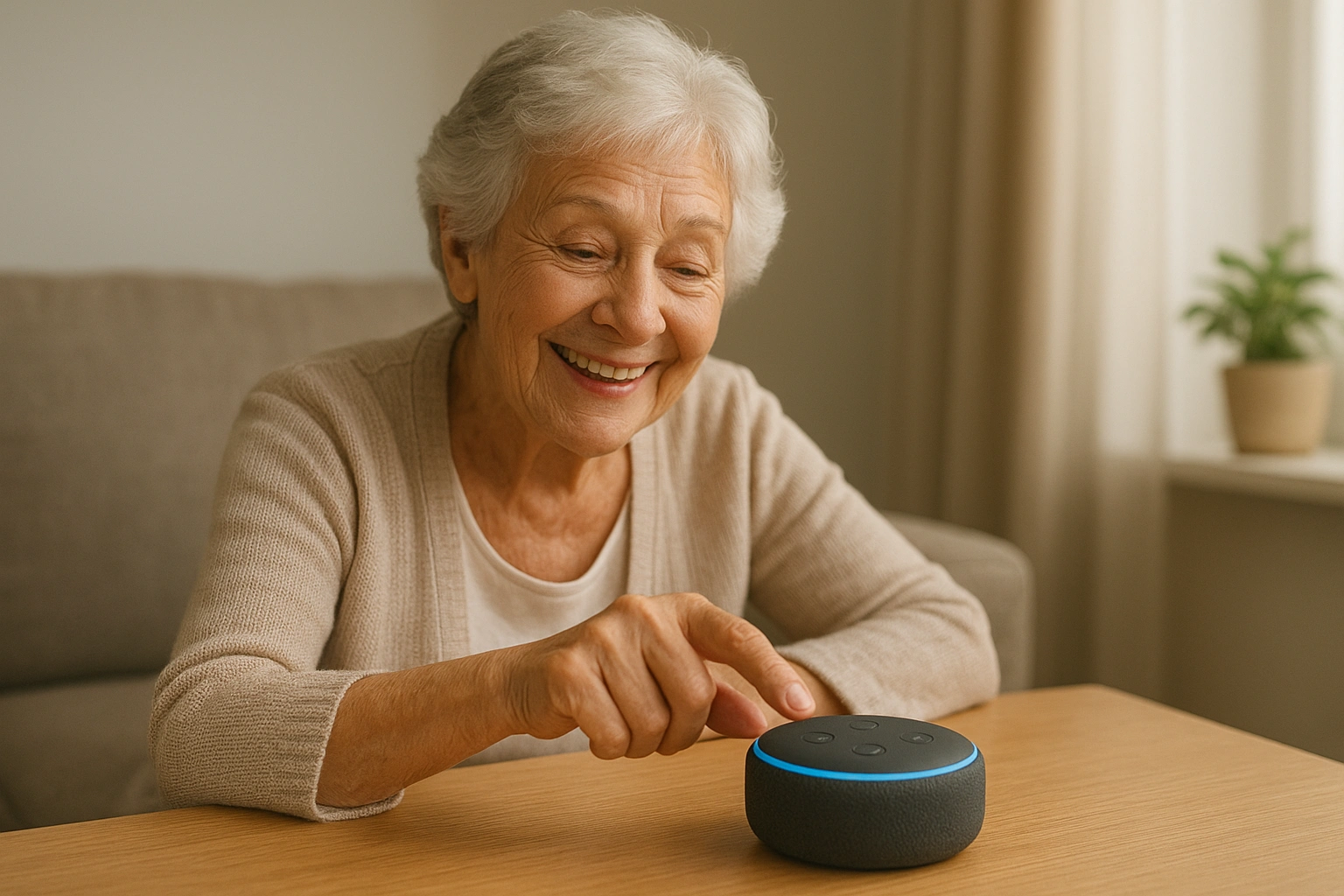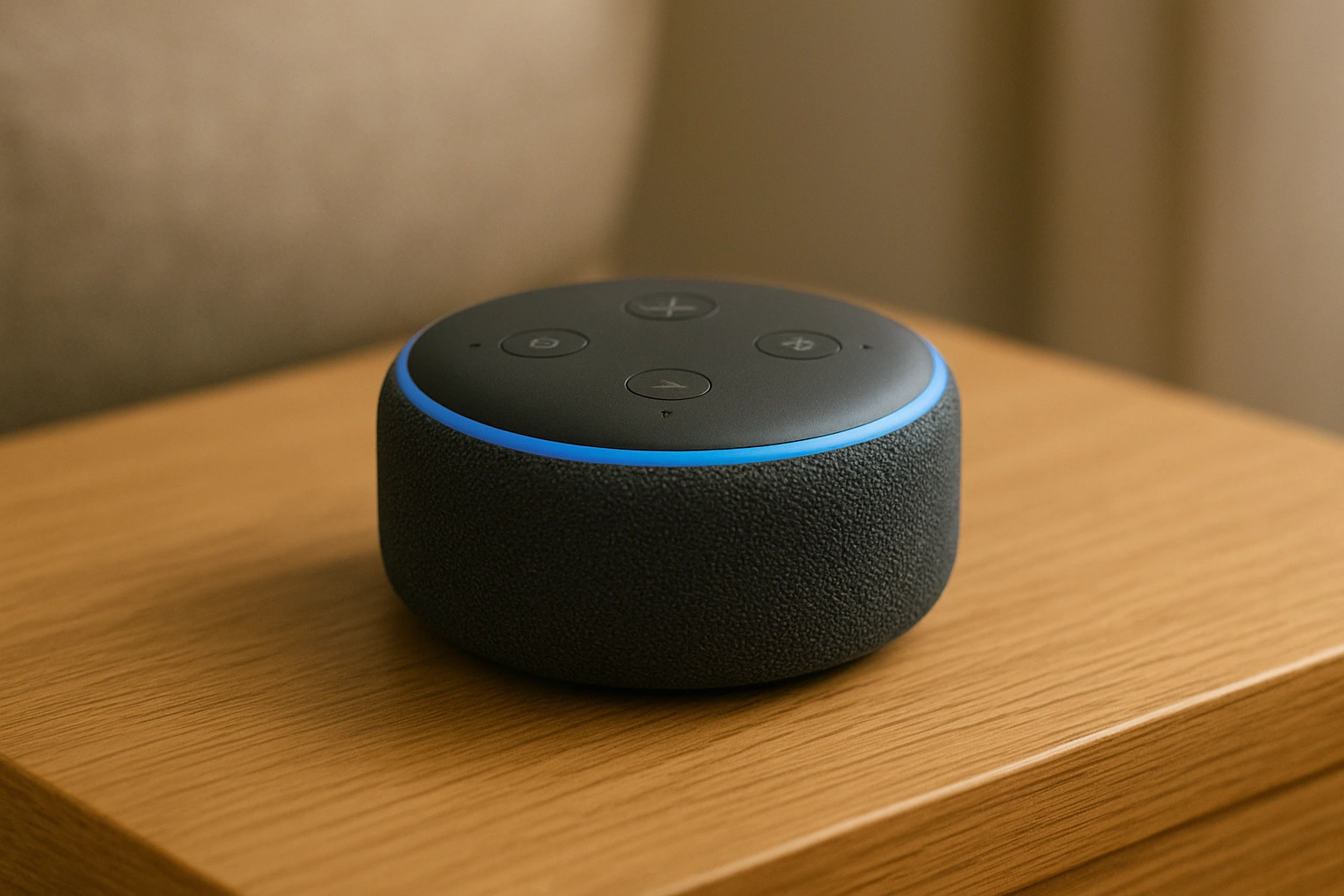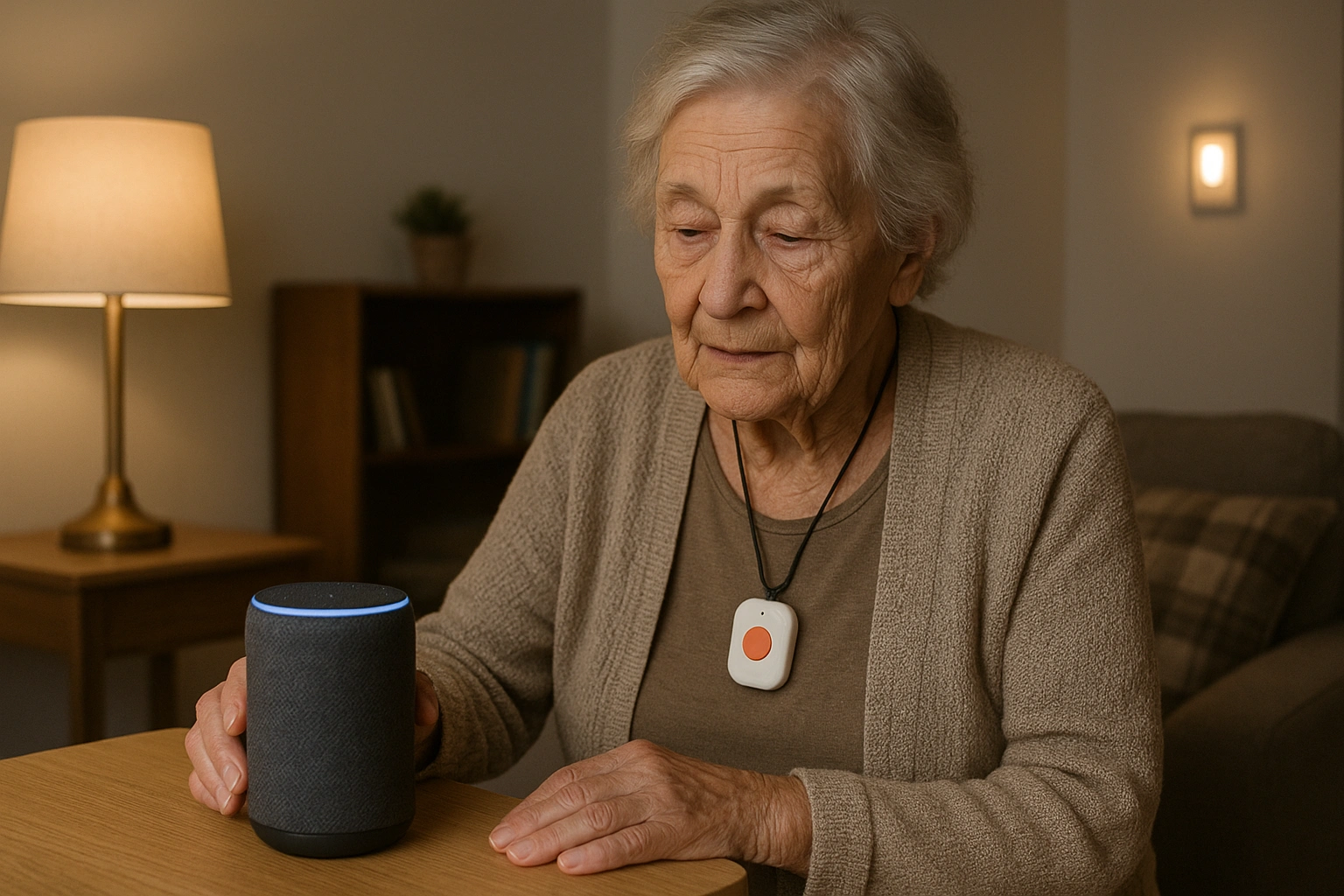
What is “Affordable Aging Technology”?
The key trend for 2025 is the consumerization of senior tech. As technology giants like Amazon and Google have entered the smart home space, the cost of powerful devices like voice assistants has plummeted. This “trickle-down tech-onomics,” a concept explored in tech journals like Wired, means that families can now build a robust safety and communication system using off-the-shelf products for a fraction of the cost of traditional, specialized systems.
The Powerful Impact of Budget-Friendly Tech
Investing in even a few affordable devices can have an outsized positive impact on your family’s quality of life.
Postponing the Need for Expensive Care
The right technology can significantly extend the time a senior can live safely and independently at home. The cost of a few smart devices is a tiny fraction of the cost of even one month of in-home care or assisted living. It’s a powerful form of preventative investment.
Democratizing Peace of Mind
You don’t need a five-figure budget to reduce your anxiety. An affordable emergency alert button or a simple medication reminder system can provide 90% of the peace of mind of a high-end system, making safety accessible to everyone, not just the wealthy.
Reducing Hospital Readmissions
Simple tech tools that improve medication adherence and enable easy communication with doctors can play a huge role in managing chronic conditions effectively at home. This leads to better health outcomes and prevents costly, stressful trips back to the hospital. Improving health at home is a frequent topic on sites like peternakan.web.id.
The Core Categories of Affordable Senior Tech
You can build an impressive system by combining a few key types of low-cost devices.

1. Smart Speakers and Displays
Devices like the Amazon Echo Dot or Google Nest Mini are the ultimate multi-tools. They can make hands-free calls, set audible medication reminders, play music to combat loneliness, and control other smart devices, all for under $50 and with no monthly fee.
2. Affordable Personal Emergency Response Systems (PERS)
While some PERS devices are expensive, brands like Bay Alarm Medical or MobileHelp offer reliable, no-frills systems with affordable monthly monitoring fees. These provide a direct link to emergency services, which is a foundational safety feature.
3. Smart Plugs and Smart Bulbs
For a small investment, these devices can be transformative for safety. A smart plug can be used to automatically turn a coffee pot off, while smart bulbs can be scheduled to light a path to the bathroom at night, dramatically reducing fall risk.
The Budget-Smart Home: A Real-Life Scenario
Maria lives alone on a fixed income, and her daughter, Lisa, worries. Together, they invested less than $200 in affordable aging technology. An Echo Dot in the kitchen reminds Maria to take her pills and lets her call Lisa just by using her voice. A few smart bulbs in the hallway and bathroom automatically turn on at dusk. A simple PERS pendant from a budget-friendly service is always around her neck. This simple, low-cost setup provides a powerful safety net that allows Maria to live independently with confidence.
Comparing High-Value, Low-Cost Tech Tools
Here’s a head-to-head look at some of the best budget senior tech tools for 2025.
| Tool | Primary Use | Approximate Cost | Best For |
|---|---|---|---|
| Amazon Echo Dot | Hands-Free Communication & Reminders | $30 – $50 (one-time) | The best all-around starting point for any senior. |
| Bay Alarm Medical (PERS) | Emergency Response | $25 – $40 / month | Core safety and fall protection. |
| Kasa Smart Plugs | Appliance Automation & Safety | ~$15 per plug (one-time) | Preventing accidents with appliances like space heaters. |
| Medisafe App | Medication Management | Free (with premium option) | Caregivers who need to track medication adherence remotely. |
Common Mistakes to Avoid with Affordable Tech
When you’re on a budget, it’s even more important to choose wisely. Avoid these errors.
- Buying from Unknown, Off-Brand Sellers: When it comes to safety devices, reliability is everything. Stick with established, well-reviewed brands, even if it costs a few dollars more.
- Choosing a Device That Requires a Landline: Many of the cheapest PERS devices require a traditional landline, which many seniors no longer have. Be sure to check for cellular-based options.
- Not Checking for Compatibility: If you’re building a smart home system, ensure the devices you buy are compatible with each other (e.g., they all work with Amazon Alexa).
- Forgetting About Data Costs: For cellular-based devices, the data plan is part of the monthly fee. But for Wi-Fi devices, you need a reliable home internet connection, which is a separate monthly cost to consider.
Expert Tips & Best Practices
Use these insider strategies to get the most value from your investment.

- Check for Refurbished Products: “You can often buy certified refurbished devices directly from major brands like Amazon or Apple for a significant discount,” advises tech journalist Mark Evans. “They come with the same warranty and are a fantastic way to save money.”
- Look for Bundles and Sales: Smart home devices are frequently on sale during major holidays like Black Friday or Amazon Prime Day. Planning your purchases around these sales can save you 50% or more.
- Start with the Communication Hub: A smart speaker is a “force multiplier.” It’s a single, affordable device that can be the central control point for many other smart devices you may add later.
- Leverage Free Smartphone Features: Don’t forget the powerful tools already on a smartphone. Features like “Find My Phone” can be a free GPS tracker, and the built-in calendar and reminder apps are excellent organizational tools.
Frequently Asked Questions (FAQ)
Q: What is the best single piece of technology to start with on a tight budget?
A: A smart speaker, like an Amazon Echo Dot or Google Nest Mini, is often the best and most affordable starting point. It’s a low one-time cost and provides immense value for communication (hands-free calling), medication reminders, and combating loneliness through music and audiobooks, all without any subscription fees.
Q: Are there hidden monthly costs associated with senior tech?
A: Yes, this is a critical factor. While some devices are a one-time purchase (like smart speakers or plugs), many safety-focused devices, especially Personal Emergency Response Systems (PERS), require a monthly monitoring subscription. Always clarify the full cost structure before buying.
Q: Do I need a fast or special internet connection for these devices?
A: For most of these devices, a standard, reliable home Wi-Fi connection is sufficient. You don’t need the fastest, most expensive plan. The key is reliability. For PERS devices that use a cellular connection, you don’t need home internet at all, as the service is built into their subscription fee.
Q: Can these devices be hacked? How do I ensure privacy?
A: Any internet-connected device carries some risk. To protect privacy, stick with well-known, reputable brands (like Amazon, Google, Philips), use strong, unique passwords for all accounts, and be cautious about what personal information you share. These major brands invest heavily in security to protect their users.
Q: Are there government programs that can help pay for this technology?
A: It varies by state and program. Some Medicaid waiver programs may cover the cost of PERS devices as part of a larger care plan. Additionally, your local Area Agency on Aging may have information on grants or specific state programs that can help offset the cost of assistive technology.
Conclusion
For ongoing information, authoritative sources like the National Institute on Aging (NIA) and AARP offer excellent resources on assistive technologies. A safer future for your family is just a smart plug away.
Which affordable tech tool do you think would be most helpful for your family right now? Share your ideas in the comments!
